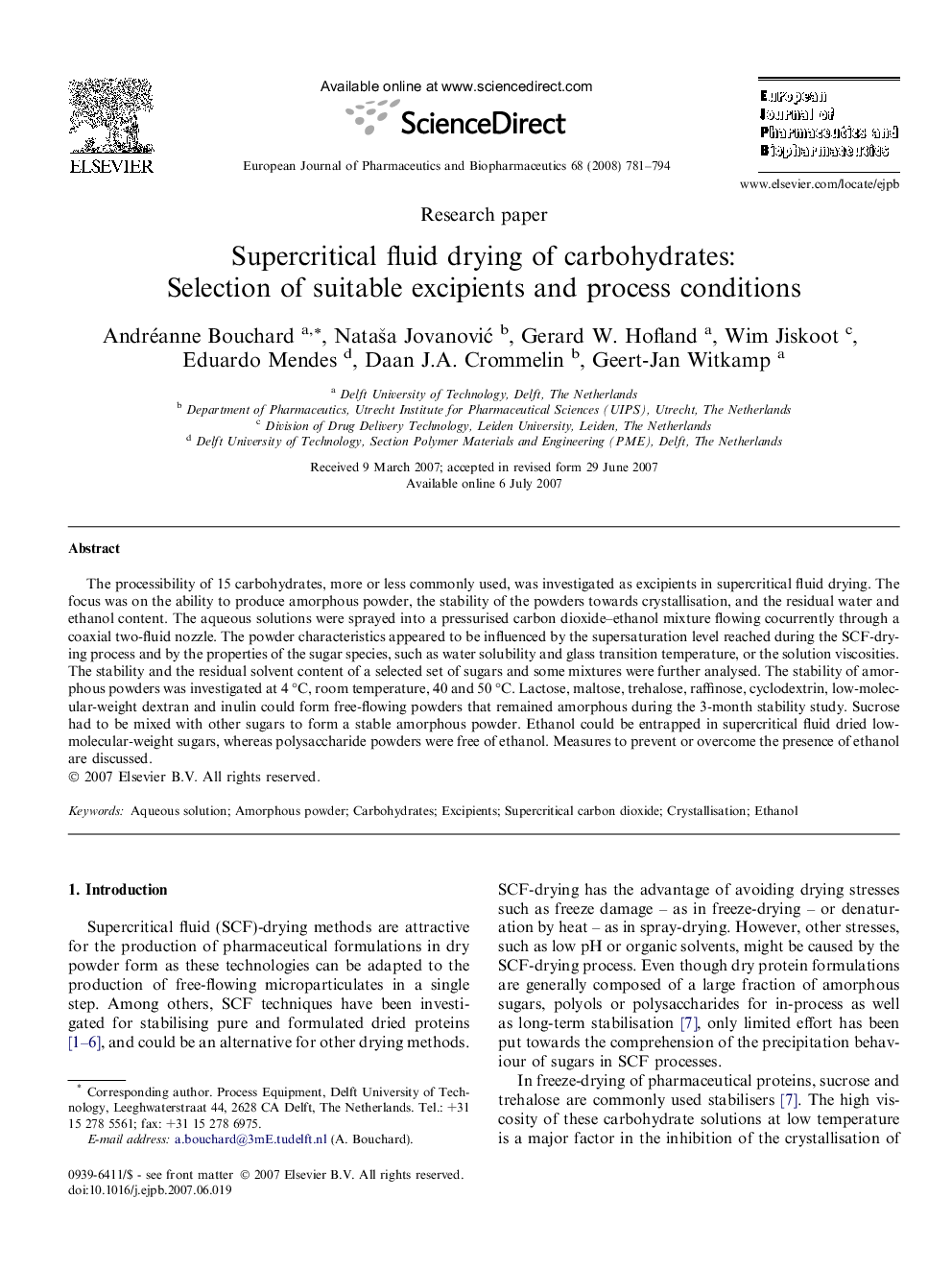| Article ID | Journal | Published Year | Pages | File Type |
|---|---|---|---|---|
| 2084890 | European Journal of Pharmaceutics and Biopharmaceutics | 2008 | 14 Pages |
The processibility of 15 carbohydrates, more or less commonly used, was investigated as excipients in supercritical fluid drying. The focus was on the ability to produce amorphous powder, the stability of the powders towards crystallisation, and the residual water and ethanol content. The aqueous solutions were sprayed into a pressurised carbon dioxide–ethanol mixture flowing cocurrently through a coaxial two-fluid nozzle. The powder characteristics appeared to be influenced by the supersaturation level reached during the SCF-drying process and by the properties of the sugar species, such as water solubility and glass transition temperature, or the solution viscosities. The stability and the residual solvent content of a selected set of sugars and some mixtures were further analysed. The stability of amorphous powders was investigated at 4 °C, room temperature, 40 and 50 °C. Lactose, maltose, trehalose, raffinose, cyclodextrin, low-molecular-weight dextran and inulin could form free-flowing powders that remained amorphous during the 3-month stability study. Sucrose had to be mixed with other sugars to form a stable amorphous powder. Ethanol could be entrapped in supercritical fluid dried low-molecular-weight sugars, whereas polysaccharide powders were free of ethanol. Measures to prevent or overcome the presence of ethanol are discussed.
